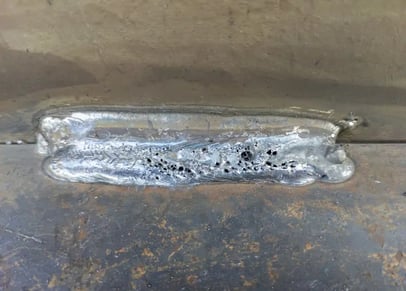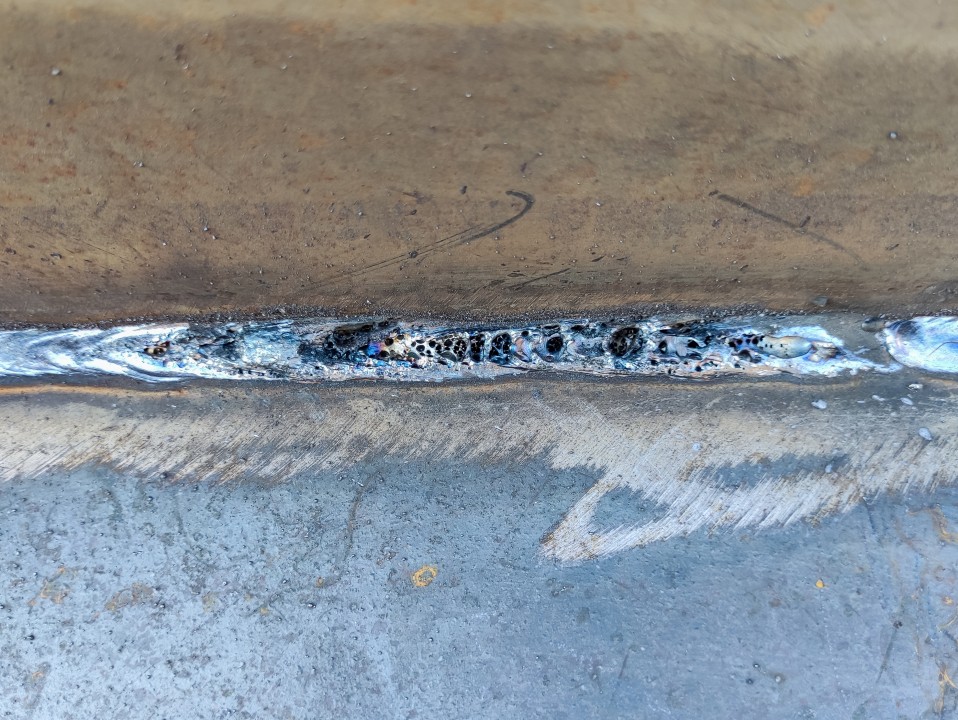Unwinding the Secret of Porosity in Welding: Tips for Reducing Flaws and Optimizing Quality
In the intricate globe of welding, porosity continues to be a consistent difficulty that can considerably impact the top quality and honesty of welded joints. As we delve right into the depths of porosity in welding, discovering the secrets to its avoidance and control will be critical for professionals looking for to master the art of top quality weldments.
Recognizing Porosity in Welding
Porosity in welding, a typical issue run into by welders, describes the presence of gas pockets or gaps in the welded product, which can jeopardize the integrity and high quality of the weld. These gas pockets are usually trapped throughout the welding procedure because of various aspects such as improper securing gas, contaminated base products, or incorrect welding specifications. The formation of porosity can deteriorate the weld, making it susceptible to splitting and corrosion, eventually leading to structural failings.
Comprehending the origin causes of porosity is critical for welders to efficiently stop its occurrence. By acknowledging the value of maintaining appropriate gas securing, guaranteeing the tidiness of base products, and optimizing welding settings, welders can dramatically reduce the possibility of porosity development. In addition, utilizing techniques like pre-heating the base product, using correct welding techniques, and carrying out complete examinations post-welding can further help in lessening porosity issues. On the whole, a comprehensive understanding of porosity in welding is vital for welders to create high-grade and durable welds.

Usual Sources Of Porosity
When examining welding processes for possible top quality problems, recognizing the common reasons for porosity is necessary for preserving weld honesty and stopping structural failings. Porosity, defined by the visibility of tooth cavities or voids in the weld steel, can considerably endanger the mechanical residential properties of a welded joint. One usual source of porosity is inappropriate shielding gas protection. Inadequate protecting gas circulation rates or inappropriate gas mixes can lead to climatic contamination, causing porosity formation.
Furthermore, welding at incorrect parameters, such as excessively high traveling rates or currents, can produce extreme turbulence in the weld swimming pool, capturing gases and triggering porosity. By dealing with these common reasons via appropriate gas protecting, material prep work, and adherence to ideal welding specifications, welders can minimize porosity and boost the top quality of their welds.
Methods for Porosity Prevention
Implementing reliable safety nets is essential in minimizing the event of porosity in welding processes. One strategy for porosity avoidance is ensuring correct cleaning of the base steel before welding. Contaminants such as oil, oil, rust, and paint can bring about porosity, so complete cleaning making use of ideal solvents or mechanical methods is crucial.

Another secret safety net is the selection of the appropriate welding consumables. Using high-grade filler materials and securing gases that appropriate for the base steel and welding procedure can considerably lower the risk of porosity. Furthermore, keeping proper welding criteria, such as voltage, current, travel rate, and gas circulation rate, is important for porosity avoidance. Drifting from the suggested setups can cause improper gas click here to find out more protection and poor fusion, resulting in porosity.
Moreover, using correct welding strategies, such as keeping a regular traveling rate, electrode angle, and arc size, can aid protect against porosity (What is Porosity). Ample training of welders to guarantee they adhere to ideal techniques and quality assurance treatments is additionally crucial in decreasing porosity issues in welding

Finest Practices for High Quality Welds
One trick practice is keeping proper sanitation in the welding area. Extensively cleaning the work surface and bordering area prior to welding can help alleviate these issues.
One more finest method is to very carefully choose the suitable welding specifications for the particular materials being signed up with. Correct criterion choice makes sure ideal weld penetration, blend, and total high quality. Utilizing top quality welding consumables, such as electrodes and filler metals, can significantly influence the last weld quality.
Importance of Porosity Control
Porosity control plays an essential duty in making sure the stability and quality of welding joints. Porosity, identified by the existence of cavities or gaps within the weld metal, can significantly endanger the mechanical buildings and structural integrity of the weld. Extreme porosity weakens the weld, making it extra prone to breaking, deterioration, and overall failing under operational lots.
Effective porosity control is necessary for keeping the desired mechanical buildings, such as strength, ductility, and strength, of the bonded joint. What is Porosity. By decreasing porosity, welders can enhance the general top quality and integrity of the weld, ensuring that it satisfies the performance demands of the desired application
Furthermore, porosity control is important for accomplishing the preferred visual look of the weld. Too much porosity not just damages the my link weld but also interferes with its visual appeal, which can be vital in markets where visual appeals are crucial. Appropriate porosity control methods, such as utilizing the right protecting gas, managing the welding specifications, and making sure correct tidiness of the base materials, are vital for creating premium welds with very little problems.

Final Thought
To conclude, porosity in welding is a common defect that can endanger the top quality of the weld. By comprehending the root causes of porosity and implementing correct prevention techniques, welders can decrease flaws and accomplish greater high quality welds. It is necessary to control porosity in welding to make certain the stability and strength of the link end product. Applying finest practices for porosity control is critical for accomplishing optimum welding results.